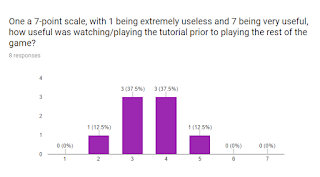Metro Nexus is a puzzle-platformer game that is both cooperative and competitive at the same time. It has an old-school arcade feel that is a homage to an old Arcade game called City Connection. Players navigate each level by their vehicle, that can jump from platform to platform and pick up and use items such as mines and life. The design of the game was inspired by transit systems from worlds major cities.
Featured skills: Research, Project Management
The first thing I did was work closely with the developer to identify key objectives of the study. I was able to split the requests up into five objectives. As an indie game, it is imperative that the game is user-friendly to anyone who plays it. It came down to making sure Metro Nexus was as user-friendly as it could be.
Test Objective:
- Develop an ideal match time range based on user feedback.
- Determine which area(s) of the score screen are a priority to participants.
- Of the two game modes (co-op and competitive), determine which one the user would think is the main mode. Which do they naturally gravitate to?
- When users are forced to play cooperatively, do they find it to be a chore or do they enjoy playing both cooperatively and competitively (or vice versa)?
- See if users understand the goal of the game.
I conducted usability testing on Metro Nexus over the course of two hours with eight users. Users were broken up into two groups of four. After usability test sessions the users completed a short questionnaire.
Task Overview:
There was a total of four tasks. Initially I asked players what their impression of the game is starting from the tutorial. They were later asked in the questionnaire how useful they felt the tutorial was.
User responses hovered around feeling neutral to relatively useless about the tutorial. Specifically, users didn't gain an understanding for the items that are important to understand and use throughout the game. Items are not discussed during the tutorial.
For the remaining three tasks, players were asked to play in a 4-player setting, a 3-player setting, and a 2-player setting. Users were encouraged to think-aloud during these matches.
There was a total of four tasks. Initially I asked players what their impression of the game is starting from the tutorial. They were later asked in the questionnaire how useful they felt the tutorial was.
User responses hovered around feeling neutral to relatively useless about the tutorial. Specifically, users didn't gain an understanding for the items that are important to understand and use throughout the game. Items are not discussed during the tutorial.
For the remaining three tasks, players were asked to play in a 4-player setting, a 3-player setting, and a 2-player setting. Users were encouraged to think-aloud during these matches.
Executive Summary - Stengths:
- Everyone could identify the goal of the game (yay!).
- Everyone could pick up the game and start playing fairly easily despite skill level.
- Users rated the game to be entertaining.
Weaknesses:
- Users were divided as to how useful the tutorial was.
- Users rated the game to be confusing.
- It took users a while to figure out what the percentage box meant on the results screen.
- About half of the users were able to understand the item purposes.
Recommendations:
- Get rid of the blue boxes on the graph. This information distracted users and confused them.
- Consider showing a short explanation of what things mean on the results screen during the tutorial.
- Consider adding an information box next to the percentage box, timer box, and lighting box.
Summary
Ultimately, more testing would need to be done to further explore experiences and understandability issues. Issues such as confusion and usefulness of tutorial should be further explored in order to determine why these are issues. This research was great for guiding future research and I look forward to playing and testing this game more.



Hi Hannah
ReplyDeleteYour works seems very interesting and I would like to get in touch with you regarding an opportunity with Ameriprise in Minneapolis. If you are interested please call me @ 408-913-6752 or e-mail me @ vedant.sharma@pyramidci.com